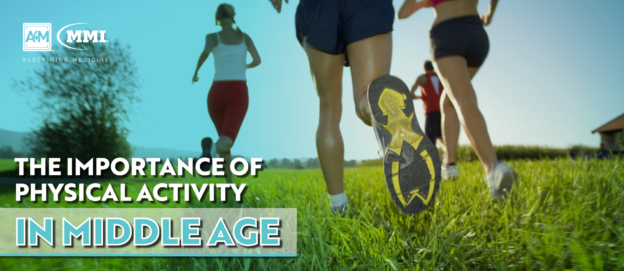The benefits of regular physical activity are well-established and well-documented, spurring public health efforts nationwide and urging the population to meet at least minimum exercise guidelines. Prior research has indicated that routine physical activity may decrease the risk for all-cause mortality, cardiovascular disease, and even certain cancers. However, most data stems from observational studies which assess physical activity at a single point in time and its effects on subsequent mortality and chronic disease outcomes.
Because physical activity behaviors can vary over the course of an individual’s lifetime, assessing the correlation of exercise over time and subsequent mortality rates may better explain the relationship. Although few studies have assessed the long-term effects of physical activity on mortality risk, new research from the University of Cambridge aims to clarify the impact of baseline and long-term trajectories of physical activity on mortality from all causes, cardiovascular disease, and cancer.
Physical Activity Trajectories and Mortality
Published in June of this year in BMJ, a population-based cohort study a strong positive association between increased activity in middle age and decreased all-cause, CVD, and cancer mortality rates. Investigators examined 14,599 adults from the larger European Prospective Investigation into Cancer and Nutrition-Norfolk study in the United Kingdom to determine the effects of long-term activity levels on longevity.
Study participants were between the ages of 40 and 79, with a mean age of 58 years at baseline. After the baseline clinic visit, three follow-up assessments were conducted: one consisted of answering a validated survey about occupational and leisure activity as well as other mortality risk factors 1.7 years after baseline. The second assessment was a clinic visit 3.6 years after baseline, and the third consisted of a similar survey 7.6 years after baseline. In order to decrease bias risk from underlying health conditions, participants who died within 1 year of the last assessment were excluded. All other participants were followed until 2016 with a median follow-up of 12.5 years.
Investigators estimated physical activity expenditure (PAEE) as energy expended kg/day using an algorithm calibrated against combined movement and heart rate monitoring. Dietary information was derived from validated food frequency surveys, from which researchers then calculated an overall diet quality score taking into account nutritional components known to affect health – such as sodium, vegetables, and sugar-sweetened beverages.
Increased Activity Levels in Mid-Life and Life Span
During the course of the study, 3,128 participants died: 950 died from cardiovascular disease, while 1,091 died from cancer. At this point in the investigation, the mean PAEE had declined by 17%, indicating the positive influence of higher activity levels and long-term increases in activity.
Investigators found that each 1 “kJ/kg/day” per year increase in activity was linked to a 24% decrease of all-cause mortality risk, a 29% decrease in CVD-related mortality, as well as an 11% decrease in risk for cancer-related death. Quantifying this increase, study authors equate it to a gradual increase over a 5-year-period from baseline inactivity to the WHO-recommended minimum requirements of 150 minutes of physical activity per week.
Further investigation revealed that individuals who increased their activity levels over time had lower mortality risk compared to their inactive counterparts, while those with higher activity levels garnered the most benefit. Compared to inactive participants, increased activity was linked to a 24% lower risk for all-cause mortality among those with low baseline activity whereas those with high baseline levels had a 42% lower risk of death. Interestingly, increased activity yielded benefits irrespective of medical history of cardiovascular disease and cancer or other cardiometabolic risk factors.
Based on their results, study authors speculate that meeting and maintaining WHO-recommended physical activity guidelines may potentially prevent 46% of deaths associated with physical inactivity at the population level. Additionally, the study proved that individuals in middle age and beyond, including those with CVD and cancer, can gain significant longevity benefits from increased physical activity regardless of baseline activity and established risk factors, such as overall diet quality, weight, and blood pressure.
This implicates that considerable population health benefits can be attained with consistent engagement in physical activity, especially during middle age and beyond, as well as the continued need for fitness-focused public health efforts. Not only should the population be encouraged to meet minimum physical activity guidelines, but public health efforts should also emphasize the importance of maintaining activity levels, especially during middle age and beyond.

